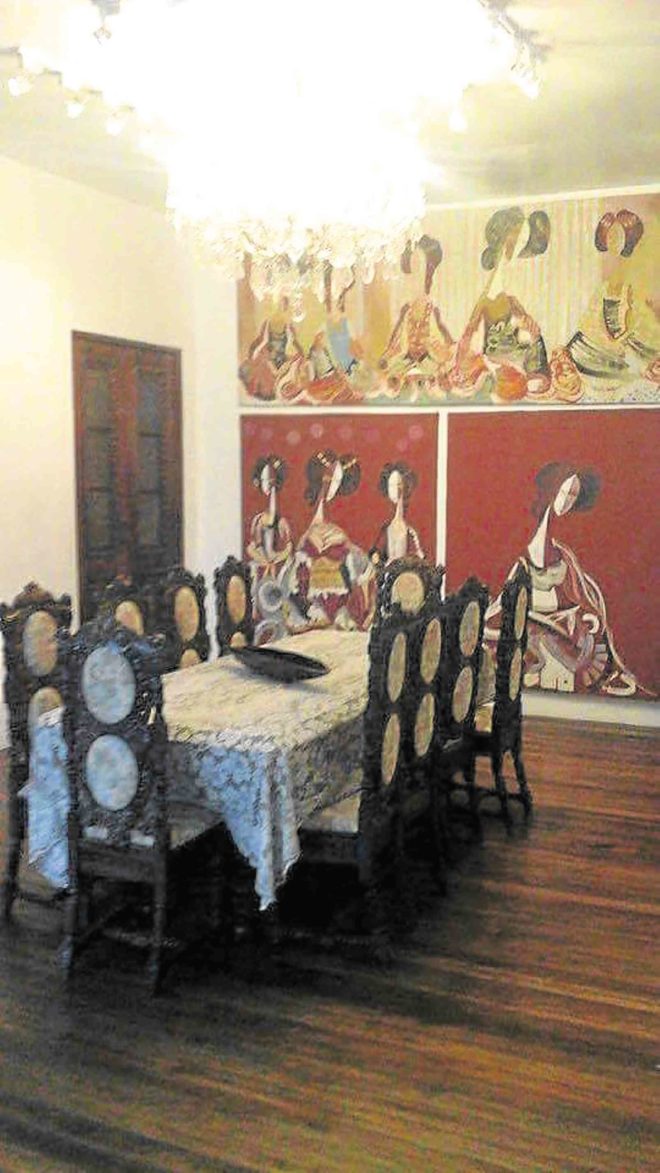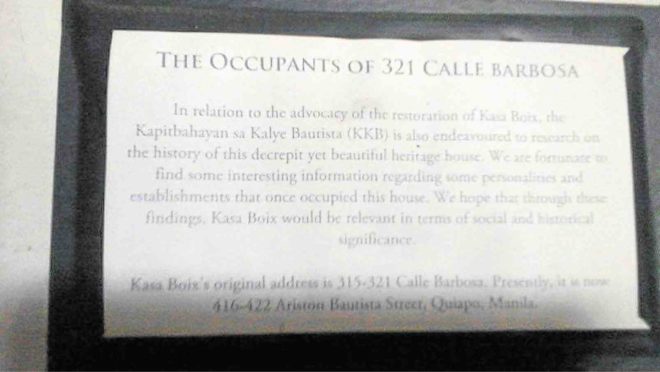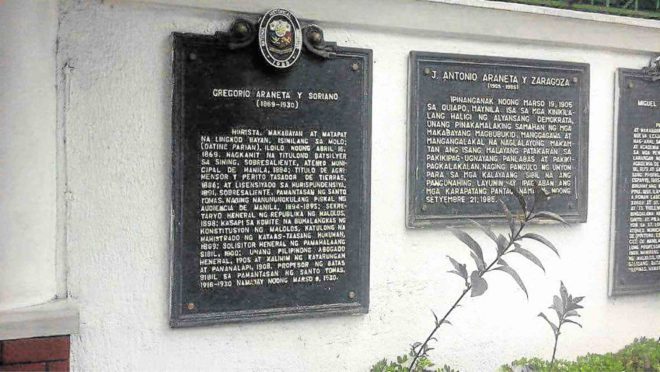
A foreigner once called R. Hidalgo the most beautiful street in the country. Though now only a shadow of its vibrant past, this district could still see the flourishing of various faiths and cultures.
Quiapo, named after a native flower (also known as kuyapo) that flourished along its river banks, was once known for its aristocratic quarter on R. Hidalgo Street, which led from the edge of what was the town plaza surrounding the old Quiapo Church to the all-steel prefab San Sebastian Church.
Families such as the Aranetas, Paternos, Legardas, Padillas, Tuasons and Hidalgos once lent luster, with their splendid mansions, to what a foreigner named the most beautiful street in the Philippines. Some likened its vanishing perspective to a stage set of a Verdi opera.
Triumphal processions echoed those of the Walled City on occasional state visits and religious occasions. Eminent personalities like Teodoro M. Kalaw, editor of El Renacimiento, Gregoria de Jesus and composer Julio Nakpil, as well as Dolores Paterno (composer of the hymn “Sampaguita”) resided in adjoining streets. Even Manuel L. Quezon boarded as a student in the Boix (formerly Crespo and Teotico) house on Barbosa (now Bautista) Street.

Chinoy
Quiapo’s mercantile tradition at the root of its prosperity was reflected by the Chinoy businesses on Echague Street and the Quinta Market, lamentably replaced today by a modern mall-like structure. There used to be a rice depot and a central market where everything was available. I remember that my grandmother used to source her “King Sue” (pronounced king sway) ham from this street for our Noche Buena, and that my mother would take us, after her downtown excursions for magazines, to her favorite shops for delights such as caramelo (pure sugar squares), buchi and bicho (wheat puffs similar to the Spanish buñuelo) and hopia.
When the old Colgante (or hanging) bridge crossing the Pasig was replaced by the Quezon Bridge in the 1930s, part of the cluster of antebellum houses surrounding the plaza fell victim to the bulldozers for the construction of the new Quezon Boulevard. Though it is hard to believe now, at its inception, Quezon Blvd. was a wide and elegant avenue which saw the construction of trendy shops and cinemas designed in Art-Deco style by top architects of the day, and with Yankee names for theaters like Ever and Ideal.
Fronting Quiapo Church was Plaza Miranda, the venue for political rallies. The Plaza Miranda bombing onstage during the Liberal Party campaign rally on August 21, 1971—that caused horrific deaths and injuries—signaled the end of an era of open debate, and the start of using violence as an excuse to further authoritarian rule.
It also meant the end of Plaza Miranda as a political center from which arose the question: “Can you defend this in Plaza Miranda?”

Gone
Today, Quiapo is not even a shadow of its once vibrant self.
Its vast physical deterioration and the development of suburban villages in Makati and Quezon City led to the urban flight of its original inhabitants.
Gone are edifices such as the building which once housed the El Renacimiento editorial offices, as are the R. Hidalgo and Araneta manses.
The first UP School of Fine Arts is now among the Casa de Acuzar houses in Bagac, Bataan, replaced by an ungainly modern building out of style with its neighbors.
The once majestic Ocampo compound with its Japanese tower is now a haven for seamen.
Only the Bahay Nakpil on Bautista (formerly Barbosa) Street and the Padilla house (now a private art gallery) on R. Hidalgo Street remind us of its past glory, with the Boix house (Jesuit property) awaiting restoration.
A once-in-a-three-year cleaning of the estero behind these houses—which could have been our Venice in Manila—took place recently, as recorded on a blog by Maria Santos-Viola of Bahay Nakpil.
San Sebastian Church, though bereft of its once gentry parishioners, is gradually and painstakingly being restored, with such experts as architects Tina Paterno (a highly qualified and dedicated specialist in restoration) and New York-based Roz Li (who heads a restoration group called BakasPilipinas), with the support and cooperation of the Recollect priests.
Part of its survivability is that nostalgia-trippers have made it the venue for fashionable society weddings. Tourists frequent the church for its unique architectural qualities (an all-steel prefab church that nevertheless looks like a real Neogothic original in its interior).
Not far off, near Mendiola Bridge, the Art Deco Picache building has been restored as a classy dormitory for itinerant students.
The Far Eastern University, though not part of Quiapo, is a heritage site that other campuses can well emulate.

Mosque
During the martial law, the Muslim presence was introduced with the construction of a mosque called Globo de Oro, around which would cluster Maranao folk and their brethren.
This added color and variety to a deteriorating quarter, though it completely changed the character of the neighborhood.
Coinciding with the Asean summit in Manila, two bombs exploded in the historic quarter of Quiapo, but authorities were quick to deny that these were connected to terrorism. It was purported that this was more due to a local feud among Quiapo’s denizens.
Some people say, though, that Mindanao now begins in Quiapo.
There is another metaphorical sense in which Quiapo could be another Mindanao, in its other meaning as “a land of promise.” Think tourism, history and culture, in which the old houses (like the Padilla mansion and Bahay Nakpil) could be restored for boutiques, restaurants, internet cafés, art venues and trendy stores.
With its horde of students from the university belt, Quiapo is a natural for further development. We can still bring it back to bloom.

Watch Day
It was with this in mind that a one-day event called Watch Day, on April 30, 2017, was organized with the support of the World Monuments Fund at the Boix House, to serve as the “point of convergence for encounters between past and present, between people of different faiths (predominantly Christian and Muslims) and between residents and visitors to the area.”
Among the activities were a one-day cleanup on the weekend before the event by volunteers; an art exhibit set up by the artists’ group Kasibulan and of the UP College of Fine Arts Alumni Association and interviews of residents by members of Tao Pilipinas and the KKB.
The local barangay No. 383 of Zone 39, District 3 organized children’s games. The Titik Poetry group performed powerful and passionate spoken word/rap about heritage.
Architect Sophia Avendaño of the United Architects of the Philippines, gave a talk on fire prevention.
Snacks, drinks and giveaways for the children were provided by donors Coca-Cola and Johnson and Johnson Co.
From abroad, Massachusetts Institute of Technology professor and artist Azra Aksamija sent a design of two schemes of arches, representing the Christian and Muslim faiths, as art panels for the Boix House.

Like Seville
One remembers that Spain, like the Philippines, was a land in which Christianity, Islam and Judaism lived and flourished side by side for centuries. The Mudejar style, originating from the interaction of Christianity and Islam, as represented in places like Seville and Granada, flourished in Binondo and Quiapo. This was notable in such buildings as the Boix House in Quiapo and the Tabacalera building in Binondo.
One hopes that with the breakout of conflict in Marawi City in Lanao del Sur, the spirit of tolerance and desire for peace, as represented by the Quiapo supporters, will prevail.









































